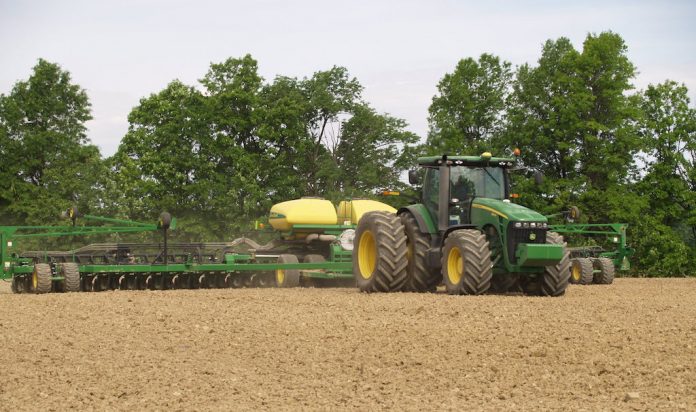The government reports March 28 had some surprises, but they made little long-term change to the markets. Yes, prices jumped on corn for a day, but the long weekend for Good Friday may have affected things.
April 1 saw May corn futures give back 6.5 cents of the gains that had come March 28. May soybeans, which had a small, 1 cent loss after the reports, lost almost another 6 cents April 1.
It was widely anticipated, going into the NASS Prospective Plantings Report, that corn acres would be cut and soybean acres would grow, probably at a one-to-one rate. That is, whatever corn lost, the soybean acres would gain. That was not quite true, but there was no big surprise.
The average pre-report estimate by traders for corn acres was for 91.776 million acres. In fact, the report put it at less than that by quite a lot — 90.06 million acres. Maybe that is a surprise of 1.7 million acres.
Questions
The interesting thing is, if you do the math, the change in planting leaves some questions. The average trade guess was for a total for corn plus beans of 178.306 million acres. The report shows a total of 176.526 million acres. Since the final acres for 2023 are 178.241, we have that problem of 1.7 million acres not accounted for. That is, it was planted to something else. What?
Some surveys have shown fewer planted acres of spring wheat and durum. This would be a sensible reaction to the decline in wheat prices over the last year. However, the Planting Intentions Report says we will increase acres of those crops. According to an article in Farm Futures after the reports, we will see increase in canola, chickpeas and edible beans in the Northern Plains. According to the reports, Minnesota and South Dakota together will reduce corn acres by 1 million acres just by themselves. The same two states will increase acres of soybeans by 250,000 acres.
The change in the South can come from rice and cotton, although the cotton part may depend upon the Roundup-Dicamba label problems. A few years ago, it was thought that cotton would come back into the South, especially east of the Big Muddy because the Dicamba portion of that mix was able to eliminate a big weed problem.
Downward trend
You can also expect that small grains will lose acres, including oats, wheat and barley. Sorghum will also lose acres. Once upon a time, my college advisor commented that he was the official oats breeder for Ohio, and the acres of oats had gone down every year he had that position. That was more than 50 years ago, and that trend has continued.
I remember when oats were planted on our farm for a third of the acres. Then, we started planting soybeans, and the oats went away. Part of the reason was better weed control and stiffer soybean stalks. Part of the reason was that we had finished the tile drainage and did not have to have summer-harvested crops so that we could tile in the stubble. Some of it was that the prices were rarely worthwhile. And then, there was the problem that I was allergic to the oat dust and was refusing to level the bins.
It should be noted that the Prospective Planting Report is “prospective.” A lot can happen, with price changes, farmers that don’t do what is expected and weather-induced changes. In June, we will see revised numbers based upon what farmers actually report to ASCS. If we are actually done planting then, we could see some changes.
Still, the fundamental news the market has to absorb is that we are maybe planting much less corn than expected. This comes as soybean budgets show a small margin, but corn budgets are strongly in the red. Scripture says that a farmer must plant with hope, and the corn budget does not show as much hope as farmers who plant corn actually must have.
Prices
Looking at the numbers, May corn futures had the recent high back on Oct. 20, at $5.28 3/4. We got as cheap as $4.08 3/4 Feb. 26. On March 28, we briefly traded a high of $4.45, and then we digested the report and got weaker. Currently, in the early hours of April 2, we are trading at $4.35-3/4, which is up a quarter-cent for the night.
May soybean futures had the high back in mid-November at $14.09 3/4. The recent low was put in Feb. 26, at $11.33 1/2. It took us most of the month to get to $12.26 3/4 March 21, only to slip below the round number of $12 recently. Currently we are at $11.87, up one and a half for the overnight.
I don’t emphasize wheat prices much, as we are so far from harvest, even though some of you have not given up on pricing the last bushels. Give it up! We have gone from $6.60 1/2 in early December to a mid-March low of $5.26 3/4, and are now trading just below 5.60.












